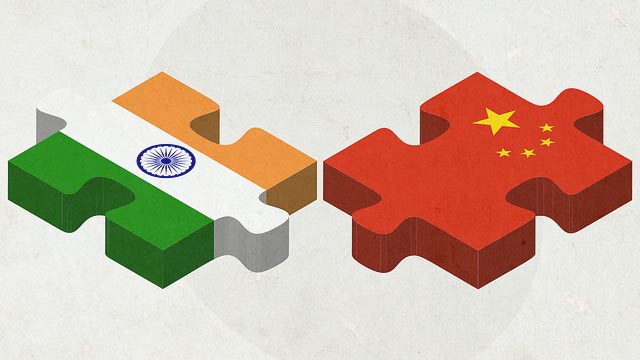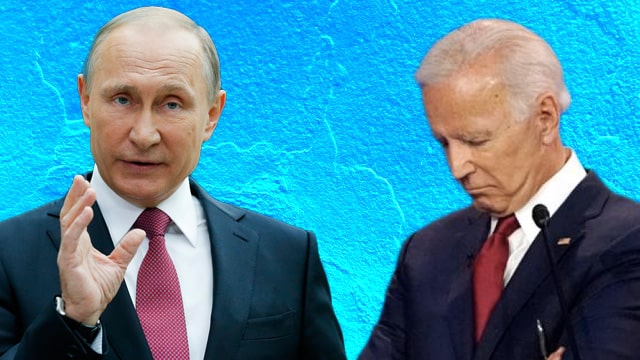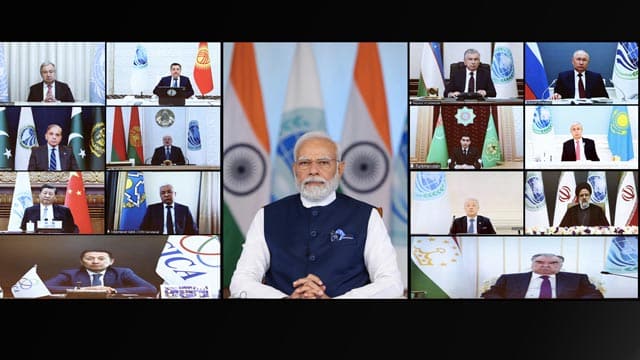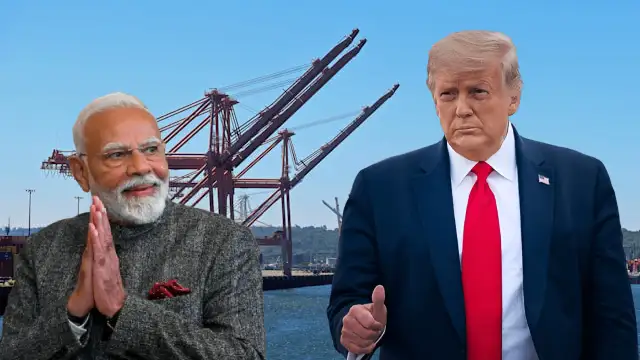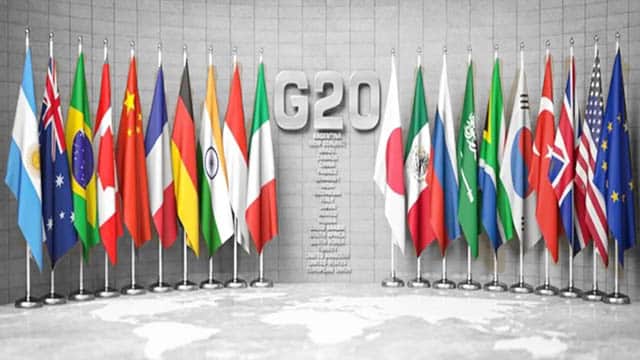Donald Trump has ratcheted up his trade war with China by imposing a staggering 145% tariff on Chinese imports, a move that has sent shockwaves through global markets and prompted a defiant response from Beijing. The dramatic escalation came on Thursday, April 10th, just a day after the American president had set tariffs at 125%, and follows China’s imposition of 84% duties on American goods.
In a startling break with the diplomatic convention, earlier on Thursday, China’s Ministry of Foreign Affairs spokesperson Mao Ning posted a video of Chairman Mao Zedong on social media platform X (formerly Twitter), signalling a hardening of the country’s stance against what it sees as American bullying. The video, from February 7th 1953, during the Korean War, shows the “Chairman” delivering an uncompromising message to Washington.
We are Chinese. We are not afraid of provocations. We don’t back down. 🇨🇳 pic.twitter.com/vPgifasYmI
— Mao Ning 毛宁 (@SpoxCHN_MaoNing) April 10, 2025
“As to how long this war will last we are not the ones who can decide. It used to depend on President Truman and it will depend on President Eisenhower or whoever become the next US president. It’s up to them. No matter how long this war is going to last, we’ll never yield. We will fight until we completely triumph,” the founding father of the People’s Republic declared.
Mao redux: Historical response to Trump’s decision to raise China tariffs to 145%
The deployment of Mao Zedong’s anti-American rhetoric represents a significant escalation in China’s messaging. While Beijing had previously published memes mocking Mr Trump’s protectionist policies, invoking the revolutionary leader—a figure both feared and despised in Washington—signals a determination to stand firm.
The Chinese foreign ministry’s choice of video appears carefully calculated. It draws a parallel between America’s failed intervention on the Korean peninsula and the current trade confrontation. Despite lacking industrial capacity and technological prowess in the early 1950s, China successfully forced America to accept a ceasefire that divided Korea. The implication is clear: if China did not yield then, it certainly will not do so now as a global economic superpower that outperforms America on numerous metrics.
Ms Mao had earlier shared a 2020 video of President Xi Jinping declaring: “The Chinese people don’t create trouble nor are we afraid of it. We will not tremble or give in to any difficulties or risks. Intimidation or pressure will never work with the Chinese nation.”
🇨🇳 The Chinese people never bow to any threats. pic.twitter.com/hdsdS716D9
— Mao Ning 毛宁 (@SpoxCHN_MaoNing) April 9, 2025
Chinese officials condemn Trump’s China tariffs reaching 145% as ‘hegemonic’
At a press conference on Thursday, Chinese Foreign Ministry Spokesperson Lin Jian delivered a forceful rebuke of American trade policy.
“The US uses tariff as a weapon to exert maximum pressure for its own selfish gains, which severely hurts the legitimate rights and interests of all countries, violates the WTO rules, sabotages the rules-based multilateral trading regime, and destabilises the global economic order,” Mr Lin said.
“The US, in defiance of global criticism, is pitching itself against the rest of the world. China has taken necessary countermeasures against the US’s bullying acts in order to safeguard its own sovereignty, security and development interests, and more importantly, to uphold international fairness and justice and the multilateral trading regime, and protect the common interests of the international community.”
He added: “A just cause enjoys the support of many. America’s move that goes against the trend of the times will find no support and end up in failure.”
Mr Lin emphasised that while China does not want a trade war, it remains unafraid. “Let me stress once again that tariff and trade wars have no winner. China does not want to fight these wars but is not scared of them. We will not sit idly by when the Chinese people’s legitimate rights and interests are denied or when the international trade rules and the multilateral trading regime are undermined.”
The day before, as Trump’s policy to push China tariffs to 145% was being implemented, Mr Lin had been equally forthright: “We will not let anyone take away the Chinese people’s legitimate right to development. We will not tolerate any attempt to harm China’s sovereignty, security and development interests. We will continue to take resolute and strong measures to safeguard our legitimate rights and interests.”
Markets volatile as Trump applies China tariffs of 145% while sparing allies
Financial markets have experienced extraordinary volatility since Mr Trump announced his tariff plans. Following his decision to pause the steepest tariffs on dozens of countries—capping them at 10% for 90 days, but pointedly excluding China—markets initially rebounded.
Taiwan stocks soared 9.2% in early trading on Thursday, while Japan’s Nikkei 225 rose 7.2% and Seoul’s Kospi climbed more than 5%. In Australia, the ASX 200 jumped more than 6%, while Hong Kong’s Hang Seng index climbed 2.69%.
On Wall Street, the Dow index surged nearly 8% on Wednesday, and the Nasdaq rose 12.2%, its best performance in 24 years.
However, by Thursday morning in America, the optimism had reversed. The Dow Jones opened 700 points lower, the S&P 500 dropped 120 points, and the Nasdaq shed 3% or 500 points.
China faces currency dilemma amid trade tensions
Meanwhile, China’s yuan has fallen to a historic low vis-a-vis the US dollar. On April 10th, the yuan finished the domestic trading session at RMB 7.3498 per dollar, its lowest since December 2007. It’s expected that China will opt for a gradual depreciation rather than an on-off devaluation of the yuan.
Markets are watching closely for Beijing’s next move on the yuan as expectations grow for economic stimulus to counter the escalating Sino-American trade dispute. Analysts at MUFG believe China will need more aggressive, front-loaded measures to offset the tariffs’ impact.
A controlled devaluation of the yuan has emerged as a contentious option. Such a move could reduce export costs for Chinese goods, partially neutralising American tariffs and stimulating growth. But it risks provoking Washington, potentially triggering further retaliation and increasing global market volatility.
A weaker yuan could also limit the appreciation of European currencies against the dollar, complicating international trade patterns. Senior Chinese advisers suggest a modest depreciation might help exports without undermining market confidence—especially if paired with targeted subsidies or tax rebates.
Critics at ING counter that deliberate devaluation is misguided. They argue that tariffs apply selectively to specific goods rather than all exports, limiting currency adjustments’ effectiveness while risking broader financial instability.
Beijing’s challenge is to support its economy while navigating through Mr Trump’s 145% China tariffs without destabilising global markets—a delicate balancing act many think it can perform well.
Trump’s decision to impose 145% China tariffs threatens American consumers
China’s state-affiliated Global Times newspaper quoted several international sources suggesting America is miscalculating in its approach. Tadashi Yanai, chief executive of Uniqlo owner Fast Retailing Co, warned that the new China tariffs of 145% would lead to American isolation.
“Tariffs that prioritise only one’s own country are unacceptable. Doing such things could end up being detrimental to the country itself,” Mr Yanai said, according to comments reported by the Global Times.
Zhou Mi, a senior research fellow at the Chinese Academy of International Trade and Economic Cooperation, told the newspaper: “By resorting to brute pressure and bullying, the US is eroding its own credibility. In contrast, China has maintained consistent principles: upholding the multilateral system and honouring mutual commitments.”
The Global Times also cited Bloomberg reporting that “the highest US levies in more than 100 years will all but guarantee goods shortages and higher prices for American shoppers.”
Global community rejects Trump’s approach of singling out China for 145% tariffs
The American president’s tariff pause for most countries has created an opening for dialogue, according to Spanish Prime Minister Pedro Sanchez, who arrived in China on Thursday for a two-day visit. Meanwhile, European Commission President Ursula von der Leyen announced that the EU would put its first countermeasures against American tariffs on hold for 90 days.
The Shanghai Cooperation Organisation (SCO), whose members include China, Russia, India and several Central Asian states, released a statement supporting “an open, transparent, just, inclusive, and non-discriminatory multilateral trading system with the WTO at its core.”
According to an article in The New York Times cited by the Global Times, Trump’s policy of escalating China tariffs to 145% has ironically made China “a more appealing option” for companies frightened by unpredictable American trade policy. “Faced with constant flux and unpredictability, companies are choosing to stay with what they know: longstanding relationships with Chinese suppliers or manufacturing partners,” the American newspaper reported.
Evidence shows futility of Trump’s strategy to hit China with 145% tariffs
This is not the first time Mr Trump has waged a tariff war against China. During his first presidency (2016-20), he imposed similar measures with disastrous economic consequences for America.
A working paper by the National Bureau of Economic Research found that contrary to Mr Trump’s claims, tariffs were fully passed through to American import prices—meaning American consumers, not Chinese exporters, bore the full cost. The study estimated that American consumers faced losses equivalent to 0.58% of GDP.
American producers saw mixed effects: while some benefited from tariff protection, many suffered from higher input costs. Overall, the trade war reduced American real income by 0.04-0.17% of GDP.
The distributional consequences were particularly stark. Counties heavily exposed to Chinese retaliatory tariffs, especially agricultural regions, saw larger declines in employment and consumption. While the industrial Midwest gained some protection, rural areas suffered from agricultural retaliation.
A separate study by the World Trade Organization in March 2020 found that the Trump-era trade conflict reduced bilateral trade, triggered supply chain shifts, and imposed negative global GDP effects of 0.1-0.5%. When accounting for uncertainty, the projected long-term GDP reductions for America reached up to 1.5%.
China’s resilience against Trump’s move to raise tariffs to 145%
In an editorial, the Global Times projected confidence in China’s ability to weather the economic storm. It noted that China’s economy “enjoys ample room for manoeuvre, strong internal potential, and vast external space—it is like an ocean capable of withstanding turbulent winds and storms.”
The newspaper cited Deutsche Welle reporting that “in the trade war, China is likely to be the more resilient side.” It also quoted Thomas Friedman, a columnist for the New York Times, lamenting that the trade war has put America into “a no-win war.”
As Chinese Foreign Ministry Spokesperson Lin Jian emphasised: “No matter how the international landscape evolves, China’s economy has a solid foundation and sufficient driving forces for steady growth against the odds.”
“With the strong leadership of the CPC Central Committee, the notable strengths of socialism with Chinese characteristics, a solid foundation built up from sustained rapid development, a super-sized market, a complete industrial system and more importantly, the concerted efforts of the 1.4 billion people, China has the confidence and capability to address various risks and challenges.”
Chairman Mao’s wisdom haunts Trump’s policy of imposing 145% tariffs on China
If one takes a cue from Ms Mao’s invocation of Chairman Mao, one finds a Chinese folk saying the revolutionary leader often cited: “Lifting a rock only to drop it on one’s own feet” (Speech at the Meeting of the Supreme Soviet of the USSR, November 6th 1957).
Mao also famously declared: “Riding roughshod everywhere, US imperialism has made itself the enemy of the people of the world and has increasingly isolated itself. The atom bombs and hydrogen bombs in the hands of the US imperialists will never cow those who refuse to be enslaved. The raging tide of the people of the world against the US aggressors is irresistible.” (“Statement Supporting the Panamanian People’s Just Patriotic Struggle Against US Imperialism”, January 12th 1964).
At a time when America struggles to confront Houthi forces blocking the Red Sea in support of Palestine—with the USS Harry Truman reportedly retreating from Yemeni waters despite Saudi support—Mr Trump’s decision to hit China with tariffs of 145% appears increasingly reckless. To many observers, America’s willingness to provoke China while failing to subdue much smaller adversaries suggests a profound strategic miscalculation.


